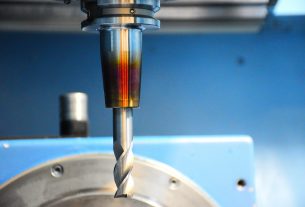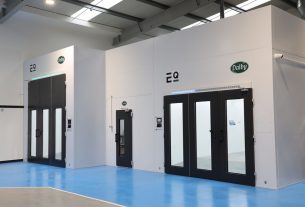In 1969, Victor Scheinman invented the Stanford arm, the first all-electric, six-axis articulated robot — the predecessor of the robot arms that we use today. Here Jonathan Wilkins, director at automation equipment supplierEU Automation, discusses how robots have diversified in weird and wonderful ways since 1969.
With over 384,000 industrial robots installed globally in 2018, according to the International Federation of Robotics, robots are growing in popularity. In fact, they have become ubiquitous in industrial facilities and they’re not just used for the applications you’d expect.
Robots develop a thick skin
One innovation in the field of robotics is an electronic skin that gives robots a sense of touch. Known as Wootzkin and developed at the University of Edinburgh, the electronic skin is made up of nanostructures and includes underlying electronics that can be used in targeted drug delivery or in gripper technology. Like human skin, it can give the robot feedback on force, pressure, temperature and humidity, making it easier for robots to complete tasks that require a high level of dexterity.
The sensitive area size can be changed, between 50 microns and 12 inches, tailoring the robot to the specific needs of the application. Wootzkin operates in temperatures from 0 to 180 degrees Celsius, which means that a robot can perform dextrous tasks under conditions that humans cannot endure, while maintaining a delicate approach to fragile items.
Self-assembling robots
Researchers at Massachusetts Institute of Technology have produced a kit that can be used to construct a variety of robots using only five components. Professor Neil Gershenfeld was intrigued by the fact that all living things are made of 20 amino acids placed into a myriad of combinations and wanted to implement this concept into robotics.
The kit consists of five different components, including rigid and flexible components, a coil, electromagnetic parts and a magnet, at the five millimetre-scale. The parts can be assembled into different shapes, such as a tiny walking motor and a gear turning robot. The research group’s goal is to expand to a purpose-built manufacturing robot built out of standard components that can be easily disassembled and repurposed.
Cropping up in agriculture
Robotic innovation is taking place in fields as well as factories. Strides have been made with the creation of the Global Unmanned Spray System (GUSS), an unmanned, fully automated vehicle to spray orchards with pesticides. The system is helping to bridge the shortage of workers and is more efficient than spraying manually.
GUSS creates a safer environment for workers, by reducing their exposure to the potentially harmful chemicals used in pesticides. It uses lasers and touch sensitive bumpers that allow the robot to be aware of its surroundings and immediately stop when it detects an object, stopping the potential damage to produce and people.
During the creation of GUSS, the largest issue was that GPS did not consistently work under the tree canopies. To overcome this, sensors and software, such as cellular connectivity, were implemented to supplement the GPS. Cellular and radio signals are transmitted to the control vehicle, operated by a person, allowing multiple robots to relay position data, statistics and a live stream from its front mounted camera. GUSS also gives farmers the ability to analyse all pertinent information, such as the volume of pesticides used on each plant, which can be helpful when marketing crops to buyers. Those using autonomous machines, like GUSS, will see fewer mistakes made, leading to less lost time and an increase in cost savings.
384,000 robots were installed in 2018 and it is likely that this number will continue to rise. As we see increasing numbers of robots, researchers are working on new and innovative types too. To find out more about the latest trends in automation, visit www.euautomation.com.




